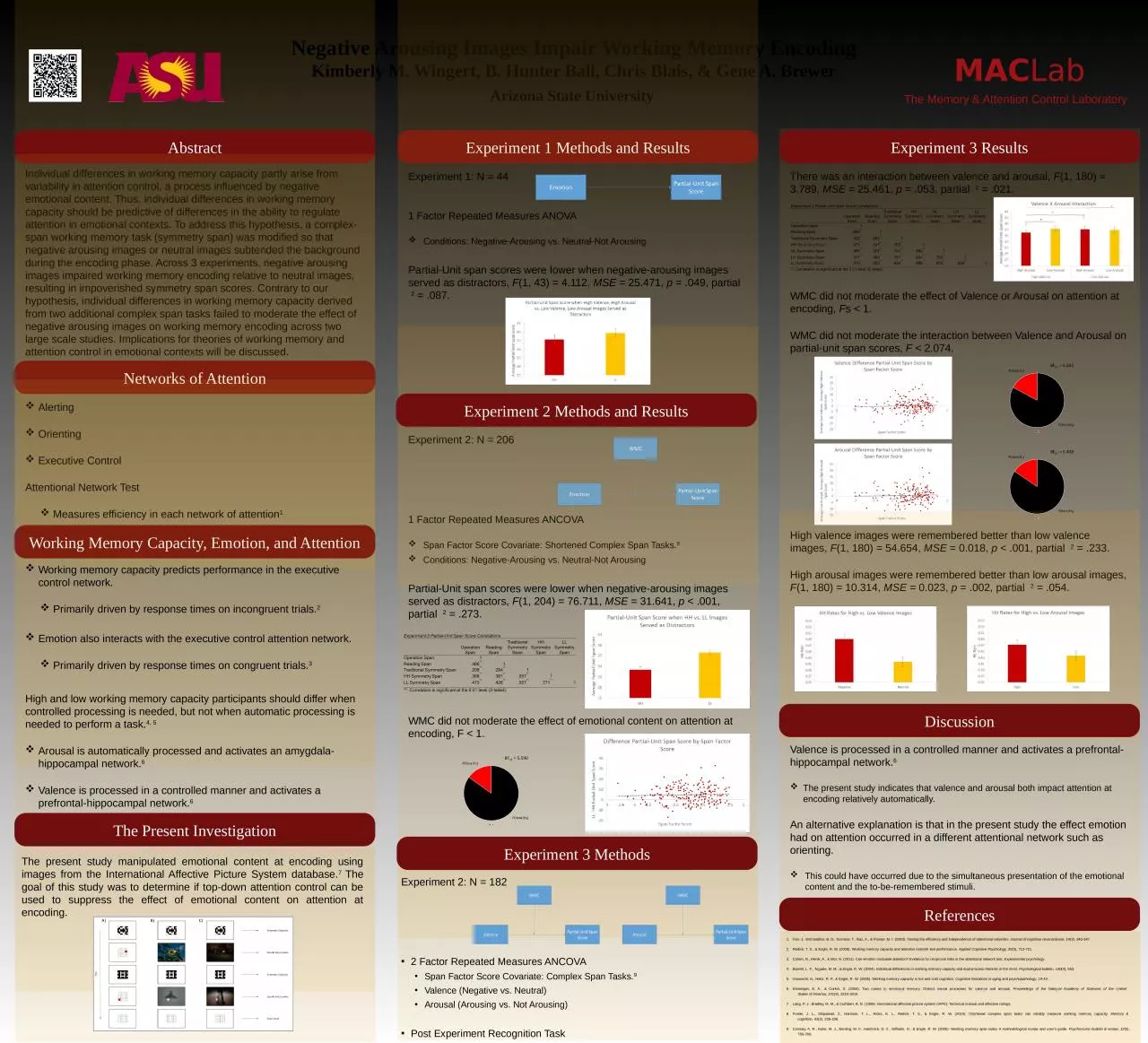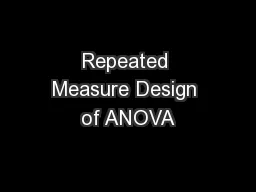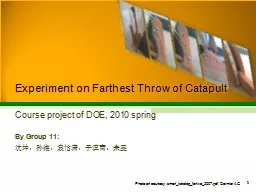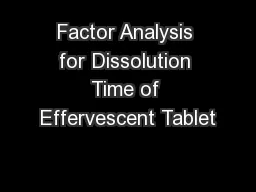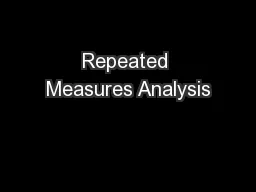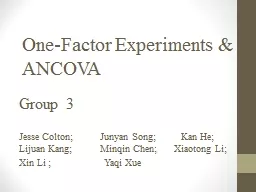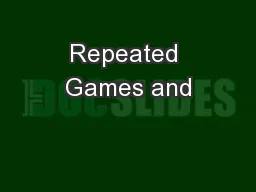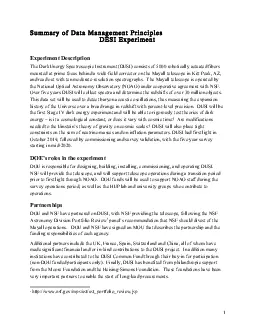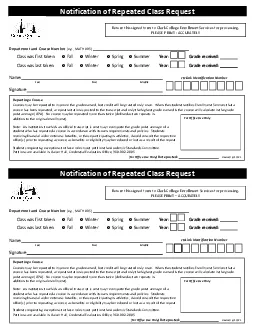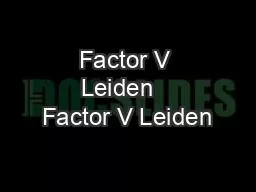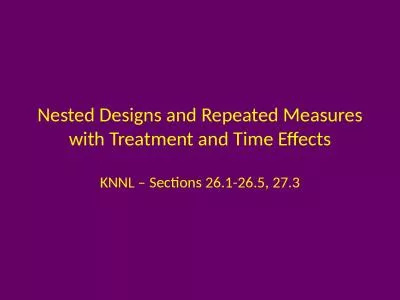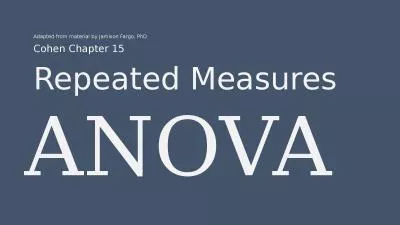PPT-Experiment 2: N = 206 1 Factor Repeated Measures ANCOVA
Author : ethlyn | Published Date : 2022-06-15
Span Factor Score Covariate Shortened Complex Span Tasks 8 Conditions NegativeArousing vs NeutralNot Arousing PartialUnit span scores were lower when negativearousing
Presentation Embed Code
Download Presentation
Download Presentation The PPT/PDF document "Experiment 2: N = 206 1 Factor Repeate..." is the property of its rightful owner. Permission is granted to download and print the materials on this website for personal, non-commercial use only, and to display it on your personal computer provided you do not modify the materials and that you retain all copyright notices contained in the materials. By downloading content from our website, you accept the terms of this agreement.
Experiment 2: N = 206 1 Factor Repeated Measures ANCOVA: Transcript
Download Rules Of Document
"Experiment 2: N = 206 1 Factor Repeated Measures ANCOVA"The content belongs to its owner. You may download and print it for personal use, without modification, and keep all copyright notices. By downloading, you agree to these terms.
Related Documents

